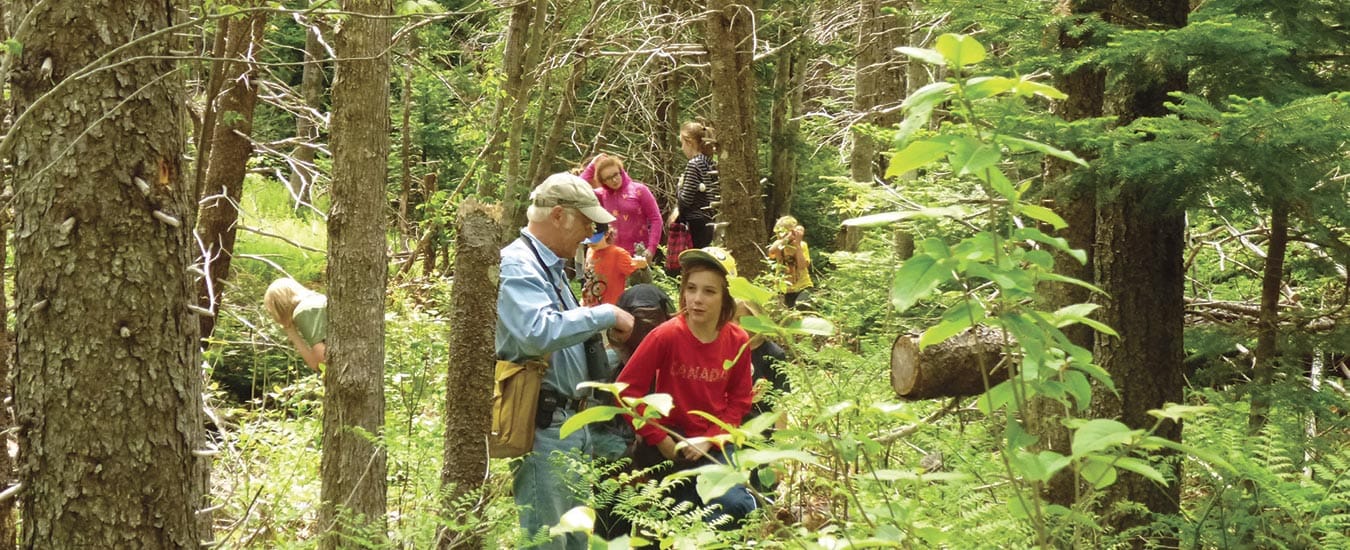Young Naturalists Clubs helping to plant seeds of curiosity in the outdoor world
MANY MOONS AGO I lived as a youngster in the Yukon. The only animated screen at home was on the door. It seasonally seethed with mosquitoes. Lacking virtual realities, my real life adventures centred upon a natural world that lay steps away from home. That world was populated with grizzly bears and wolves who howled on winter nights. Outdoor experiences became opportunities to hone my physical abilities while studying and learning about nature’s complex, fascinating ways. My affinity with and curiosity about nature gradually transmogrified into a satisfying, lifelong quest. Biting insects aside, the natural world kindled a great respect, and feelings of peace and place. I eventually chose to live surrounded by nature rather than in a town or city.
Uprooting “screen potatoes”
Much has changed since I was a skinny kid. A quarter of young Canadians are overweight now, according to Statistics Canada. Other studies have youngsters spending six to seven hours a day slouched in front of a screen. Their sedentary lifestyle is one reason why roughly 93 per cent of our youth are not getting enough exercise.
To counter this sluggish existence, some parents are uprooting young “screen potatoes” and enticing them to join local Young Naturalists Clubs (YNCs). YNCs operate in all four Atlantic provinces, offering free opportunities for youth and their families to experience and learn about nature. Programs vary by location, but generally begin in September and run until June.
Monthly events include field trips or workshops. Adult naturalists volunteer their time and scientists with knowledge of aspects of natural history also play important roles as guest presenters and field trip leaders. Presentations about the natural world strive to be delivered in an age-appropriate, hands-on and engaging fashion.

Participants learn to use basic equipment like binoculars and loupes (hand magnifiers) and how to navigate field guides. Kids go on to acquire basic naturalists skills by actually observing and discovering the natural world around them. Field trips offer youth opportunities to explore natural areas in or near their community. Beyond animal and plant identification, questions always arise about how species survive with the seasons and how they interact as communities.
It’s clear that children taken off-screen and sent outdoors for unstructured play avoid a host of potential problems. Richard Louv coined the term “nature deficit disorder” in his 2005 book Last Child in the Woods. Louv pulled together and presented research results concerning children with sedentary screen lifestyles. The physical consequences have been linked to obesity and diabetes, and mental health problems including Attention Deficit Hyperactivity Disorder (ADHD) and depression.
Natural curiosity
There’s another reason that young folks should spend time outdoors. People don’t miss what they’ve never experienced. It’s easy for urban kids to grow up thinking that water comes from a tap. To care about the environment, one must first appreciate and respect nature and understand what it provides to humans.
As a teenager I was fascinated not only with nature but also with engines and mechanics. For me, however, nature studies raised more challenges and questions than engine mechanics could ever muster, more “wonder power.”
Gary Schneider of Macphail Woods near Orwell, Prince Edward Island has been happily involved in youth environmental education for decades. Through his years of experience providing outdoor-guided adventures he has garnered some insights. Gary says the two sets of animals most likely to capture young imaginations when they are encountered on field trips are salamanders and owls. Luckily these critters are readily found in season at the Sir Andrew Macphail Homestead where Gary, and other dedicated staff, offer public walks during the spring, summer and fall.
Young naturalists eventually grow up. That presents opportunities to join local naturalist clubs, conservation groups, environmental groups, stewardship societies, wild flora clubs, bird societies and more. Volunteering to help a local Young Naturalists Club has been as much fun for me as it seemed to be for the kids!

